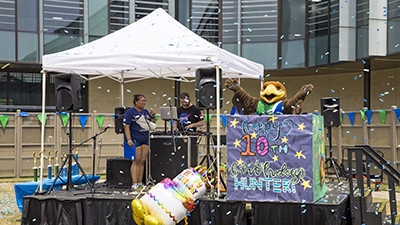
Waste
Waste Types
- Chemical & Hazardous Wastes Overview
- Acutely Hazardous Waste List (when discarding unused materials)
Facilities Wastes
Laboratory Wastes
- Lab Waste Handling Summary Chart - Overview of all lab wastes
- Waste Stream Documentation-Information Form
- Lab Waste Training (example, taken in Canvas, TAPS, or in person)
High Hazard Waste
- Peroxide Forming Chemicals Testing & Disposal Chart
- Peroxide Forming Chemical Labels
- Peroxide Storage Area Label
Peroxide forming chemicals should have a peroxide label on them and be tested for peroxides per the chart (often annually) and before distilling or concentrating. Failure to label testing and manage inventory can lead to a potentially dangerous explosive situation, and require dedicated costly high hazard stabilization waste disposal.
Old, unknown age, poor condition, or crystallized peroxide formers (inside bottle or under cap) should not be opened or moved as they may pose an explosion risk. Notify Hank via email at Grotewold@uhcl.edu for those high hazard waste pickup needs.
Waste Training
- Lab Waste Training (example, taken in Canvas, TAPS, or in person)
See Laboratory Safety page, Biological Safety section for biological waste and autoclaving procedures.
Waste Pickups
Wastes are picked up at least twice a year from designated lab waste storage areas (in each building, not each lab).
Lab waste containers (<5 gal size) should be brought to the designated waste storage area within 3 days when full.
Peroxide forming chemicals that are: old, unknown age, not kept up with testing, poor condition, or crystallized (inside bottle or under cap) should not be opened or moved as they may pose an explosion risk.
For additional pickup requests, high hazard waste pickup needs, questions or assistance, contact Hank Grotewold@uhcl.edu.






